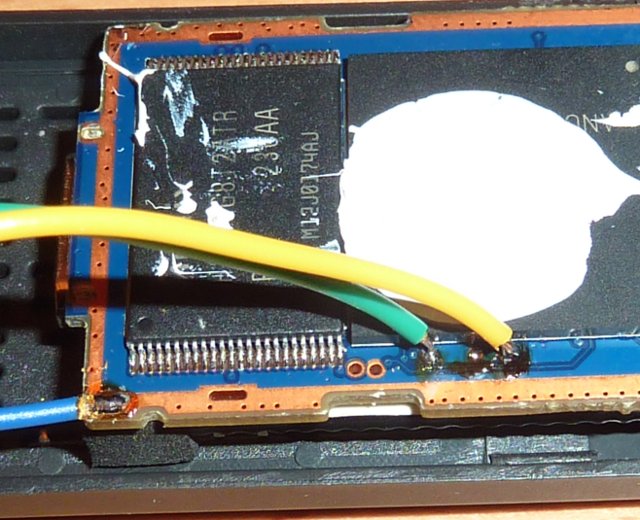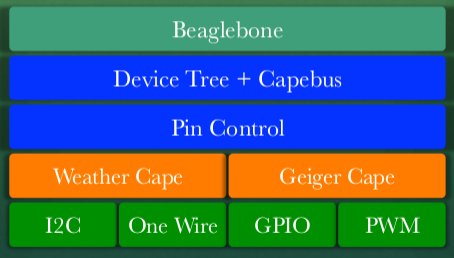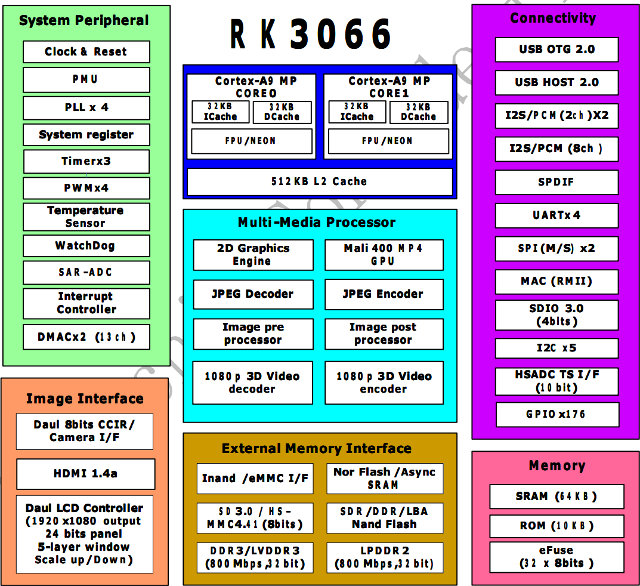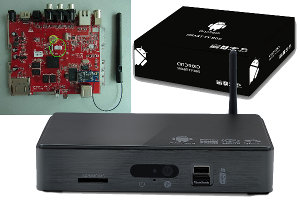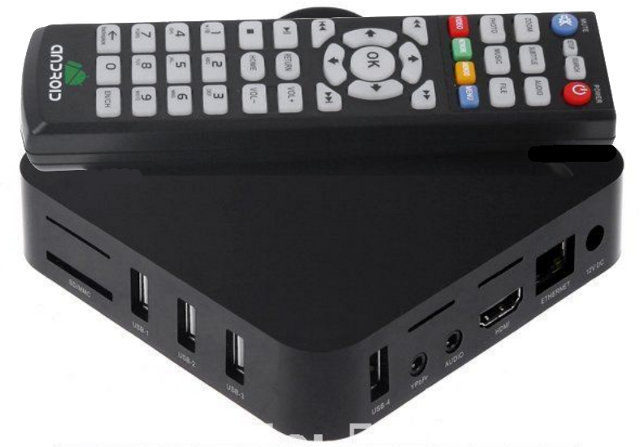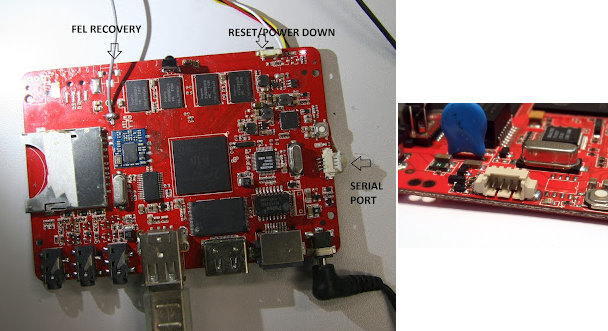Omegamoon has done a pretty neat hack on MK808 Rockchip RK3066 mini PC to connect a Sparkfun USB to TLL board and access the serial console for bootloader and kernel debugging. The first thing he had to do was to open the device, remove the heatsink, and locate the Rx/Tx pads on the board. The Rx and Tx pins are accessible through pads, not via through holes, so it’s just a little more difficult to solder, but nothing too challenging. He and his brother also soldered another cable to the ground. Then they inserted a 6-pin header via the ventilation holes of the device, soldered the 3 wires to the header, and fix the latter to the casing. Finally, they just inserted the debug board in the pin header, connected the USB cable to their PC, and started minicom (or equivalent) to start accessing the serial console. I think that […]
Beaglebone: The Perfect Telemetry Platform? – ELCE 2012
Matt Ranostay, technical staff at Ranostay Industries, gives a presentation about a telemetry system based on Beaglebone at the Embedded Linux Conference Europe on November 5, 2012. Abstract: The author will discuss his ongoing and other team members efforts to develop hardware and software that reports sensor data to the community. This talk will be split into several parts a) types of useful sensors b) hardware design of Beaglebone capes c) and telemetry reports to Pachube/Cosm. Demonstrating that in the new world of cheap prototyping boards with I2C, GPIO, and SPI that anyone can setup a decent monitoring system for home security, automation, and weather reporting. There will be a live demo of prototype geiger counter + weather station. The audience targeted is the professional hobbyist who likes to hack on microcontrollers in their spare time. It will take little to medium knowledge of electrical engineering to follow this talk. […]
Rockchip RK3066/RK30xx Processors Documentation, Source Code and Tools
Rockchip RK3066 (part of RK30xx family) is a Chinese dual ARM Cortex A9 SoC targeting multimedia products such as tablets (e.g. Cube U30GT), mini PC (e.g UG802, MK808) and in theory set-top boxes, but I can’t find any products based on this Rockchip processor. It seems mini PCs/ HDMI TV sticks have taken over this market. RK3066 Processor The processor features two ARM Cortex A9 clocked at up to 1.6 Ghz with a quad core Mali-400MP GPU. It can support 1080p (3D) encoding/decoding, provides HDMI 1.4a, VGA, composite, component and LVDS video outputs (Dual display support), USB 2.0 Host and OTG ports, a MAC interface (Ethernet), and much more… Here are the key features of Rockchip RK3066 processor: Dual Core A9 + Quad Core Mali-400MP GPU 2 banks, 8/16 bit Nor flash / SRAM interface 8 banks, 8/16 bit async NAND flash, LBA NAND flash and 8-bit sync ONFI NAND […]
Crowdfunding Initiative to Open AMLogic AML8726-M3 STB Source Code
J1nx (Peter Steenbergen) has spend a lot of time together with XBMC developers to try to bring XBMC (Linux) to ARM based set-top boxes, and initially AllWinner A10 processor seemed like a good candidate, unfortunately due to the lack of proper video engine libraries for Linux, progress on this SoC has been extremely slow. Then when Pivos and XBMC announced Pivos Xios DS set-top box based on AMLogic aml8726-M(1) would support XBMC natively, and the kernel and bootlooader (u-boot) source code was made available both on Pivos github account and AMLogic open source website, AML8726 series of processors appeared to be an ideal solution for this purpose. Instead of AML8726-M (aka AML8726-M1) which is limited to 512 MB, it was decided instead to use a faster processor AML8726-M3 that supports 1 GB RAM. The STB of choice is based on “MBX – f16ref” which should be some kind of development […]
$86 ZAP-A10 Android 4.0 Set-Top Box Powered by AMLogic AML8726-M3
You may already know that XBMC has been working on the Pivox XIOS DS set-top box based on AMLogic AML8726-M3. Pivosgroup has sponsored the development of XBMC for Android and Linux on their new media player, and it costs about $115 on sites like Amazon, but it’s not available worldwide right now. If you’re looking for an alternative AMLogic AML8726-M3 device, and are a bit adventurous, you may have a look at the ZAP-A10, an Android 4.0 networked media player featuring AML8726-M3 Cortex A9 processor, with 1GB RAM and 4 GB Flash. Here are the specs of this set-top box: SoC – Single core Cortex A9 @ 1GHz (AML8726-M3) with Mali-400 GPU System Memory – 1 GB RAM Storage – 4GB Flash & SD card slot Connectivity 10/100M Ethernet Wi-Fi 802.11 b/g/n USB – 4x USB Host port Video Output – HDMI and component (YPbPr) Video Containers – M2TS / […]
How to Create a Custom Android Firmware for CX-01 mini PC
I’ve written a post about updating the firmware on CX-01 mini PC last week. But, this week I’ve been able to go further since I’ve learned some tools available for Telechips TCC8902/TCC8903 firmware files are also compatible with TCC892X firmware files, and it’s possible to extract the firmware, modify/add files in different partitions and repack all this to burn it with FWDN tool. I’ll explain the different steps in this post, and even if you don’t own CX-01 it could be interesting as some of the commands are common to all Android devices. But first: BIG FAT WARNING!!! Although I believe the steps mentioned in this post are safe, and errors can be recovered by using the CX-01 firmware, CX-01 mini PC is not unbrickable, and if I’m wrong your device will become useless and you won’t be able to fix it. I may also mention some tools (but not show […]
HackBerry AllWinner A10 Board is Now Available for $60
The Hackberry “development board” is now available for sale on Miniand. This board powered by AllWinner A10 processor comes in 2 versions: 512 MB RAM version – Available now for $60 1GB RAM version – Available by the end of the month for $65. Both boards features a 4GB Flash, a SDHC slot, 2x USB 2.0 port, 10/100 Ethernet, Wi-Fi, HDMI & composite outputs, headphone & microphone ports and a IR sensor. The good thing is that serial interface and FEL connectors will be soldered on the board for easy debugging and recovery. The FEL recovery port allows to reflash the board using Livesuit. As a side note, Henrik, a developer involved in Allwinner A10 software development, has done some work to reverse engineer FEL USB protocol, wrote a small program to enter into Livesuit mode with an SD card (Go to the bottom of the page section “Forcing FEL […]
How to Get Free Hotel Rooms with An Arduino Board and a Resistor
Earlier this week, Cody Brocious (Daeken) gave a presentation at the Black Hat conference in Las Vegas showing how it was possible to hack and open hotel door locks (Onity HT lock systems), using an Arduino Mega 128 board, a 5.6 kOhm resistor and a DC barrel plug to physically mate with the lock (Total price: around $20). He explains that 4 million hotel rooms are fitted with this type of lock, which means you could potentially stay for free anywhere in the world. Obviously, you could also end-up in another type of room (including free food) for a longer period of time. That looks like a win-win situation to me 🙂 Each locks contain a 32-bit unique value (sitecode) that identifies a property, and is used for encryption. Cody’s Arduino’s based solution can communicate with the lock over a 1-wire communication protocol read memory to get the sitecode (no […]


